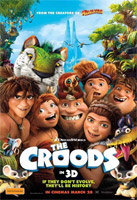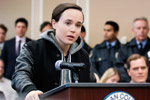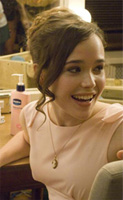Nina Dobrev Flatliners
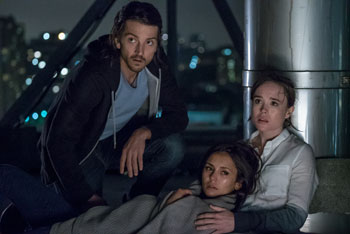
You haven't lived until you've died.
Cast: Ellen Page, Diego Luna, Nina Dobrev, James Norton, Kiersey Clemons
Director: Niels Arden Oplev
Genre: Drama, Horror
Rated: M
Running Time: 110 minutes
Synopsis: In Flatliners, five medical students, hoping to gain insight into the mystery of what lies beyond the confines of life, embark on a daring and dangerous experiment. By stopping their hearts for short periods of time, each triggers a near-death experience.
As the investigation becomes more and more perilous, they are forced to confront the sins of their pasts, as well as contend with the paranormal consequences of trespassing to the other side.
Flatliners
Release Date: September 28th, 2017
Trailer
#FlatlinersMovie
www.Facebook.com/SonyPicturesAUS
www.FlatlinersMovie.net
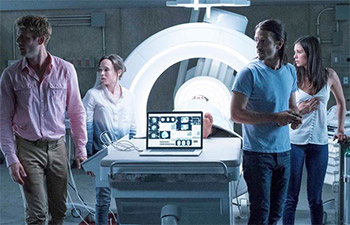 About The Production
About The Production
'We all want to know what happens when we die, but some things are clearly best left unknown," says Laurence Mark, producer of the new film Flatliners. In the film, five medical students become obsessed with these questions – and pay no heed to the producer's warning.
'Flatliners is a journey into the unknown – the last unknown, you could say," says director Niels Arden Oplev, best known for his work as the director of the Swedish film adaptation of The Girl with the Dragon Tattoo and the pilot of the acclaimed series 'Mr. Robot." 'It's an outrageous subject, to travel beyond death and have your friends try to bring you back, to explore what's on the other side."
Flatliners begins as one medical student – who has her own, carefully guarded motivations – convinces four of her colleagues to embark with her on a dangerous experiment: she wants to stop her heart and experience death for a short period of time, monitoring her brain activity to see if they can find any proof of the afterlife; then, she needs her colleagues to bring her back to life.
What could convince anyone to try something so dangerous? What else but the promise of groundbreaking – and fame-making – results. 'Imagine if they found the proof they were looking for: it would be the greatest medical discovery of the century," says Niels Arden Oplev. 'Courtney, played by Ellen Page, appeals to the pressure the other students feel in a cutthroat environment. As one character says: this is not a medical school that is educating country doctors – they are there to push the dial on human knowledge."
What the medical students find is something they did not expect: having flatlined and faced death, they not only experience what the afterlife might be like – they come back better. 'By traveling to the kingdom of death, they come back with enhanced abilities," says Niels Arden Oplev. 'They're trying to shortcut themselves to greatness. But there's a bill to be paid for doing that."
And that bill is steep: as they face their deaths and resurrections, the characters are all forced to confront the regretful actions of their pasts. 'All of us, at some point in our lives, have done something we're either ashamed of or that we regret," says producer Michael Douglas. As the students in the film face death, he says, it becomes a chance for them to face up to these sins. 'As they are haunted by their mistakes, they discover that it's never too late to try to remedy the past," he continues.
'They're confronted with elements from earlier in their lives that they're not proud of," adds Niels Arden Oplev. 'In essence, they come to a new realization of who they really are."
The original Flatliners hit the big screen in 1990. An extremely stylized and unsettling film, it immediately struck a nerve with audiences. Now, more than 25 years later, Flatliners returns to the screen in a contemporary reimagining. Douglas, a producer of the original film, teamed with producers Laurence Mark and Peter Safran to bring the retelling to the screen.
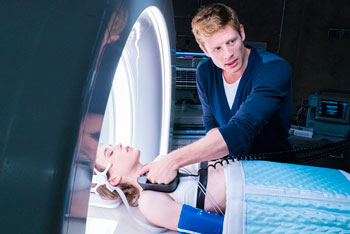 To direct the new adaptation, the producers tapped Oplev. 'Niels brings a fantastic European author sensibility to a commercial American thriller," says Peter Safran. 'What was important to all of us, and especially to Niels, was that the characters work: he ensured that everything that happens to the characters is rooted in reality, and that their past mistakes and the actions they take to redeem themselves are believable."
To direct the new adaptation, the producers tapped Oplev. 'Niels brings a fantastic European author sensibility to a commercial American thriller," says Peter Safran. 'What was important to all of us, and especially to Niels, was that the characters work: he ensured that everything that happens to the characters is rooted in reality, and that their past mistakes and the actions they take to redeem themselves are believable."
It was also important to Niels Arden Oplev to create a film that stood on its own and spoke to contemporary audiences.
'Of course, it's a thrilling entertainment, but the subject also has built-in depth to it. We could create a film that has all the good tension and entertainment of a thriller, but also depth, credibility and realism. That's why I was drawn to this project," says Niels Arden Oplev.
Mark says it made sense to take a more realistic approach. 'Science and technology have changed dramatically over the last quarter century," says Mark. 'We approached this movie in a way that was much more grounded and rooted in medical reality."
One way that Niels Arden Oplev would ground the thriller was with a commitment to realism. 'Flatliners has supernatural elements with fun and scary stuff, but within that, I wanted it to be totally believable," says Niels Arden Oplev. 'When they flatline for the first time, I wanted you to 100% believe that it was really happening."
Even more importantly, Oplev would ground the film with the strong characters, says Peter Safran. 'We wanted to strongly establish the characters early on so that when they experience the supernatural phenomena that occur after they have flatlined, you're seeing it all through their eyes: you know what they're going through, you know what they've experienced in life, and now you fear for them."
Ben Ripley, who previously penned the box-office success Source Code, was brought on board to write the script, from a story by Peter Filardi. Says Ripley, 'I was in college when the original film came out and I remember thinking it had a very smart premise, so I was intrigued by the idea of a remake. Because the elements were all there – the universal appeal of inquiring into the afterlife, the themes of atonement and redemption – I had the luxury of being able to import a structure that was totally solid. What I did do was update the science, the technology and make the cast much more diverse and competitive, keeping in line with medical schools today."
Ripley consulted extensively with medical specialists throughout the writing process. 'I became interested in the idea of neurology as the driver for the characters' interest in flatlining," he explains. 'We still don't really know much about how the brain works; it's a machine that's way too complex for us to understand. I began to wonder: what if there's a region of the brain that's responsible for producing a near-death experience, just like there are regions that cause us to feel anger or to taste a lemon?"
On numerous occasions throughout the writing process, Ripley was able to accompany a neurologist friend at his work, sitting in on morning presentation meetings and interviewing medical students on neurology rotations. 'A lot of that made it into the script," says Ripley. 'We all wanted to keep things as believable as possible, so many of the medical situations you see in the movie are in fact written and executed with a high degree of realism."
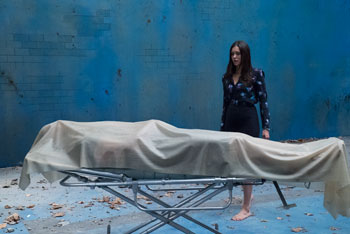 Casting The Film
Casting The Film
The filmmakers cast a wide net to find the five actors to portray the competitive young medical students. 'This is an ensemble piece and because of this, it was crucial to find actors who hopefully complemented one another," says Mark. 'Each of our cast brings something unique and distinctive to the party."
Ellen Page, who was nominated for an Academy Award® for her breakout role in Juno, was chosen by the filmmakers to play the role of Courtney, a complicated young woman who convinces her colleagues to follow her in her quest for knowledge of the afterlife.
'Ellen's character lights the fire that sets the story in motion – and fortunately, she is a galvanizing actress," says Mark.
'Courtney's a troubled woman," explains Peter Safran. 'She is haunted by the guilt she feels from having been driving when her younger sister was killed in a car accident ten years earlier; she carries the weight of that with her. That's what drives her fascination with the afterlife – she wants so much to know that her sister is at peace that she's willing to go to that ultimate level of experimenting on herself. Ellen Page brings an intellectual gravitas and acting prowess to the role; she embodies beautifully the weight that Courtney has, the suffering she feels over the death of her sister."
'Ellen brings an emotional credibility and depth to the character," says Niels Arden Oplev. 'It's compelling to see her take her character into dark corners – you can call her the ringleader; she influences the others to go along with her."
Page says the project spoke to her on a number of levels. 'I was intrigued by the way the film deals with our innate, primal fascination, fear, denial of whatever it is about the inevitable," says the actress. 'The character of Courtney felt like a character I hadn't really played before. She's a bit of a mystery and I was interested in the mystery of her – she's had an extremely difficult, traumatic past, she's struggling with a horrible guilt and it's definitely shaped who she is today. To play someone who has been through a lot and to get to explore that was really exciting to me."
That wide range continues as Ellen Page's character begins her dangerous experiments. 'Before she flatlines, she's very closed off from the intensity of her feelings about her past – she protects herself from those feelings," says Ellen Page. 'Right after she flatlines, she has a moment of bliss – that euphoria you feel just after you've gone through a difficult time. She cracks open – she starts to feel strength and freedom, but she also starts to tap into everything she's feeling inside, and her façade starts to unravel."
To play the role of the intensely private and complex character of Ray, the filmmakers turned to Diego Luna.
'Ray is the only one of the group with real life experience," explains Mark. 'He's older than the others, and he's somewhat rougher around the edges. He didn't grow up privileged, didn't attend an Ivy League School. He was a fireman who saw a lot of pain and suffering. At first, he has trouble understanding why his colleagues would want to experiment in a way he finds cavalier and reckless – but he ultimately can't help participating – especially when his fellow students need him and his experience to revive them."
'Diego imbues Ray with a multi-levelled sensitivity that you get right from the beginning," comments Peter Safran. 'Yet when he has to step up to the hero role, he has that force of personality to make it feel real. He has this wonderful smoldering way of stepping into a scene and taking control of it."
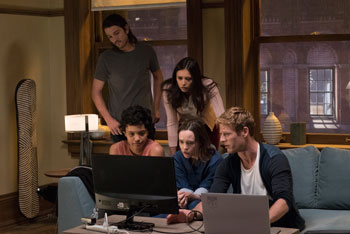 'Because Ray is a few years older than the others, he brings more life experience and credibility to the idea of flatlining. Diego has that aura of experience," adds Niels Arden Oplev.
'Because Ray is a few years older than the others, he brings more life experience and credibility to the idea of flatlining. Diego has that aura of experience," adds Niels Arden Oplev.
Luna, well-known for roles in such films as Y tu Mama Tambien, Milk and Rogue One: A Star Wars Story, says he immediately connected with the character. 'Ray is a very pragmatic character," explains Luna. 'He's a guy that is in school for a reason and he doesn't want to risk that at all. But, at the same time, he's a doctor and his curiosity gets the better of him, the idea of being part of a project that is so risky intrigues him. Ray has no interest in flatlining, but bringing these people back from death is exciting to him; it makes him feel powerful – he gets hooked. This film is all about playing with fire, playing with something you can't control."
Nina Dobrev plays Marlo, a character she says spoke to her immediately upon reading the script. 'I listed the pros and cons of the character on two pieces of paper," says Nina Dobrev. 'By the time I finished, I realized there were really no cons – I had just written down so many things I loved about her and her arc throughout the film."
'Marlo is a great character," states Peter Safran. 'She's the girl that you want to hate because she really has it all – she's beautiful, she's smart, and she's clearly well off – but she brings a humor to everything that she does, so it's impossible to hate her. A lot of that is because Nina Dobrev is also that girl; Nina is just somebody you want to hang out with; she's just a charming person and she brings that charm to the character of Marlo."
British actor James Norton plays the fun-loving and charismatic Jamie. 'Jamie is a loveable rogue," says Norton of his character. 'He's not the most serious of students, he likes to party, he likes the girls, he's full of bravado and confidence and makes no bones about the fact that what he's really after is recognition – he wants to be a celebrity doctor."
'There's a recklessness to his character," says Niels Arden Oplev. 'He's a trust fund kid, more interested in girls and parties than in medical school. There's a reason why Courtney chooses him: yeah, I think he'd be the one that would press the button and start the whole thing up."
Kiersey Clemons, best known for her breakout role in the critically acclaimed Sundance hit Dope, was chosen by the filmmakers to play the role of Sophia. 'Sophia is an interesting character because she clearly deserves to be at medical school by virtue of her intelligence and her hard work and diligence, but she lives under the oppressive rule of her single mother who has given up everything to put Sophia through medical school and expects her to succeed and excel,"
comments Safran. 'And that pressure is something that clearly weighs heavily on her shoulders, but in terms of is she letting her mother down, or is she letting herself down. Is this what she really wants to be doing? It's a very complicated and complex character and Kiersey Clemons plays her perfectly."
'I think for Sophia it was always about being the best and the smartest and the top of her class because it was what was expected of her," says Kiersey Clemons of her character. 'So when she decides to flatline she has this experience of liberation, she's claimed her own identity by doing something her mom would never want her to do."
From the very beginning the chemistry and camaraderie between the five actors was strong both on and off screen. 'We all got along from the moment we met," says Nina Dobrev. 'Everyone has such a different personality but together it's like a puzzle – we all kind of fit and everyone brings something new to the table." Adds Norton, 'In any movie, any performance, the trust involved between a group of actors is immense. You have to open yourself up and within a few days show your soul and become incredibly vulnerable with strangers. And that takes an enormous amount of trust. So it's no surprise that actors generally become very close very quickly. And that was what happened on this movie, which was great because this movie is all about trust. These characters are literally putting their lives in each other's hands and saying, -Get me back, take me back from death.' So the fact that we all got on so well, that we all trusted each other off camera meant that the relationships and the stories of our friendships on camera was much easier."
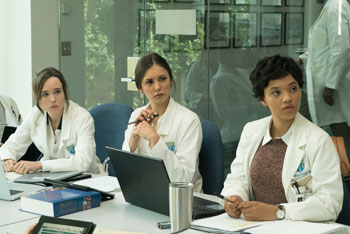 Medical Bootcamp
Medical Bootcamp
Following Niels Arden Oplev's direction to ground the thriller and supernatural elements by making the medical procedures as real as possible, the filmmakers focused on getting it right. 'It was important that anything we were exploring in terms of medicine and flatlining be accurate and medically correct," says executive producer Michael Bederman. 'The action had to be believable."
The filmmakers brought on medical consultant Lindsay Somers to ensure that the material and action be as medically accurate and believable as possible. Before the cameras rolled, and throughout production, Somers worked closely with Oplev and Ripley as well as her network of nurses, radiologists, neurologists and neurosurgeons to try to ensure that every diagnosis was correct and every drug prescribed was the right one, that the actors were carrying their equipment correctly and giving injections and intubations the way a real physician would. 'Right from the beginning, Niels Arden Oplev said he wanted medical authenticity in the film, so the first thing I did was to go through the script and bring any medical inaccuracies to his and Ben's attention," says Somers. 'For instance, in many films and television shows, you see people shocking the flatline, which is completely inaccurate because you can't shock a flatline. Ben added a scene that explains this to the audience in medically accurate terms by having Kiersey's character explain that you can't shock a flatline, that -paddles are useless without a heartbeat.' Obviously, because we're making a Hollywood film and not a documentary, we took small liberties with some things, but overall we tried to keep it as accurate as possible."
One area of research, of course, was how long the flatlining sequences should be. 'We did research on how long a person could actually be dead – how long your brain could survive without oxygen," says Niels Arden Oplev. 'Most doctors would say it's about three or four minutes – but it's actually an individual thing. There are some very interesting examples of people who lived for many minutes and came back under certain circumstances."
To bring the necessary verisimilitude to their portrayal of third year medical students, Somers put the cast through an intensive course that she describes as 'medical boot camp."
Somers explains, 'We started with a bit of theory to help them understand exactly why they were going to do all the actions they were going to do, especially in the flatline scenarios. Like, why does CPR work? What do compressions do to the heart and body? What does administering oxygen do? After that, we worked on skills - I had an ER nurse come in to help me teach them how to do CPR, how to work with IVs and oxygen masks. Then, we began to focus on the flatlining scenes themselves, as these were going to be the most physically intense scenes to shoot and were the biggest concerns for Niels Arden Oplev and the actors."
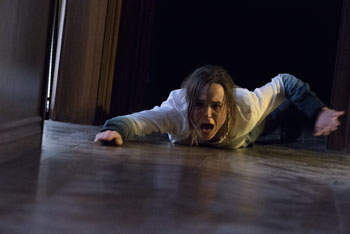 The cast all agree that the medical training was integral to their performances. 'The terminology, theory and using the equipment was a lot to learn and choreograph, but it made it so much more enjoyable to shoot," says Ellen Page. 'Having the opportunity to train together made us feel so much more connected and comfortable when we were shooting the flatlining scenes."
The cast all agree that the medical training was integral to their performances. 'The terminology, theory and using the equipment was a lot to learn and choreograph, but it made it so much more enjoyable to shoot," says Ellen Page. 'Having the opportunity to train together made us feel so much more connected and comfortable when we were shooting the flatlining scenes."
Adds Luna, 'Hopefully, doctors will see this film and say -Ahh, I see that they did their research.' It was a lot of work, but I'm very proud of the fact that we all took it as seriously as we did."
About The Production
Niels Arden Oplev worked closely with director of photography Eric Kress, production designer Niels Sejer (both of whom he had collaborated with previously on numerous projects including The Girl with the Dragon Tattoo), and costume designer Jenny Gering to come up with an overall look for the film. In designing the sets and selecting the locations, it was important to the filmmakers to establish a backdrop for the film that reflected the marriage of traditional medicine with the new research-driven medicine that compels the five students to experiment with their own mortality.
To create the fictional Trinity Emmanuel Medical Center, Sejer sought to create an atmosphere that would underscore the students' motivation to flatline – that this would be their chance to make a name in a highly competitive world. 'We wanted to create a top medical universe – an icon for aspiration in America," explains Sejer. 'I kept circling around three words – innovation, privilege, and tradition. These words, these ideas ended up being reflected in the sets and locations and even in the way we searched for architecture and design. We were scouting skybridges and I was looking around with those three words in my mind when we saw a beautiful glass skybridge. We looked at it from a number of angles and realized that it was connecting an older 70s medical facility to a very modern structure, all glass and steel architecture. The skybridge was like a passage in time; it reflected all the things that inform our movie. I took a picture of it and the buildings on either side, put them up on my wall and they became the key for a lot of the design elements and the theme of old and new, traditional and modern."
One of the biggest challenges for Sejer and his design team was the secret bunker complex hidden deep in the basement of Trinity Emmanuel Medical Center where the flatlining experiments take place. In this isolated, forgotten bunker, Niels Arden Oplev could create a set that creatively satisfied the environment he sought for the flatlining sequences. 'I wanted to pick and choose exactly what I wanted to create the best drama, but it still had to be real."
For example, there was a long discussion about whether to use paddles to shock the hearts. 'Paddles are actually something you'd have used 15 years ago; now, they use pads that they glue right onto the body," Oplev notes. 'But paddles are much more personal – especially when they'd use a paddle to stop the heart and initiate a flatline."
The solution was to create the bunker. 'The idea was that they are flatlining in a section of the hospital that is only used in emergencies, and because of that, it contains a mixture of old and new equipment," says Niels Arden Oplev. 'Upstairs, in the very modern room, they have pads; downstairs, in the bunker, they still have paddles." The bunker would still need some new equipment, notes Sejer. 'Niels wanted the set to seem as though it was left alone and lonely, isolated from the rest of the hospital but at the same time be filled with equipment that would be technically advanced enough to create the brain imaging data that the students collected during the flatlining sequences," he says.
As a centerpiece of the bunker set, Sejer designed a futuristic-looking MRI scanner that, while adding to the heightened reality the director desired for the set, would also accommodate filming the complicated flatlining scenes. 'We really wanted it to look like the next step in MRI machines," says the designer. 'I met with a neurosurgeon to discuss what you would need to read brain activity the way we were doing in the movie and then came up with the concept for our MRI machine. I showed the concept to him, and he said, -I want it, where can I get one!' That was good enough for me."
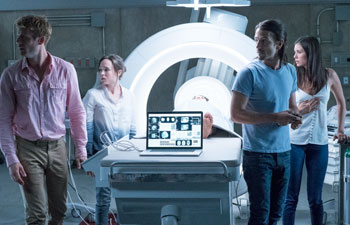 Costume designer Jenny Gering took a similar approach to the wardrobe for the film, keeping the costumes as realistic as possible. 'We did a ton of research because there's nothing worse than getting it wrong," states Gering. 'We spoke with residents and medical students and doctors. There's such a subculture in this world in terms of who wears a lab coat, who doesn't wear a lab coat, at what year in their studies do they wear it, whose coat is embroidered and so on . . . there are reasons for each level."
Costume designer Jenny Gering took a similar approach to the wardrobe for the film, keeping the costumes as realistic as possible. 'We did a ton of research because there's nothing worse than getting it wrong," states Gering. 'We spoke with residents and medical students and doctors. There's such a subculture in this world in terms of who wears a lab coat, who doesn't wear a lab coat, at what year in their studies do they wear it, whose coat is embroidered and so on . . . there are reasons for each level."
Gering created a wide-range of designs for the film. From Marlo's studied and professional suits to Jamie's preppy, Ivy-league sweaters, the wardrobe reflected each character's personality. 'Clothing is a great tool to help develop and define a character," explains Gering. 'For instance, Ray is very neutral, so he wears a lot of grays and blacks; he's not trying to stand out, he just wants to do his thing and be himself. Jamie, on the other hand, is a peacock, so his colors are a lot stronger."
'Marlo wears a lot of jewel tones, she's very crisp and tailored, there's real richness to her wardrobe and her character," Gering continues. 'For Sophia, who has such a lovely innocence and openness to her, we decided her wardrobe should be a little brighter, her look a little younger, so she wears clothes that have a little more fun and pop to them."
Ellen Page's character gave the designer an opportunity to try something a little different: 'Courtney was so much fun for me because she was a way to explore a sexiness and strength that I don't often get to do with actresses," says Gering. 'Courtney reminded me of an iconic seventies woman – a Charlotte Rampling or a Faye Dunaway, that kind of vibe. She's very professional and very serious, but she's also aware of the fact that she's beautiful and knows when to use that, and I think that comes across in the strength and power of her wardrobe."
Flatliners
Release Date: September 28th, 2017
Trailer
#FlatlinersMovie
www.Facebook.com/SonyPicturesAUS
www.FlatlinersMovie.net
©2017 Columbia TriStar Marketing Group, Inc. All Rights Reserved.
Have You Seen This?
MORE


